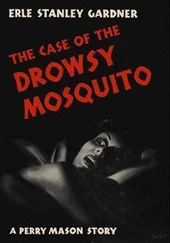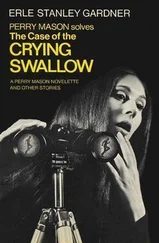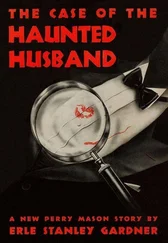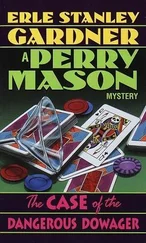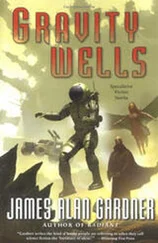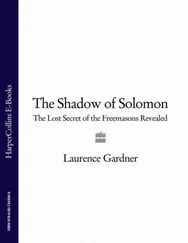Daniel Gardner - The Science of Fear
Здесь есть возможность читать онлайн «Daniel Gardner - The Science of Fear» весь текст электронной книги совершенно бесплатно (целиком полную версию без сокращений). В некоторых случаях можно слушать аудио, скачать через торрент в формате fb2 и присутствует краткое содержание. ISBN: , Издательство: Penguin Group (USA) Incorporated, Жанр: Психология, Политика, Прочая научная литература, на английском языке. Описание произведения, (предисловие) а так же отзывы посетителей доступны на портале библиотеки ЛибКат.
- Название:The Science of Fear
- Автор:
- Издательство:Penguin Group (USA) Incorporated
- Жанр:
- Год:неизвестен
- ISBN:9780525950622
- Рейтинг книги:3 / 5. Голосов: 1
-
Избранное:Добавить в избранное
- Отзывы:
-
Ваша оценка:
- 60
- 1
- 2
- 3
- 4
- 5
The Science of Fear: краткое содержание, описание и аннотация
Предлагаем к чтению аннотацию, описание, краткое содержание или предисловие (зависит от того, что написал сам автор книги «The Science of Fear»). Если вы не нашли необходимую информацию о книге — напишите в комментариях, мы постараемся отыскать её.
The Science of Fear — читать онлайн бесплатно полную книгу (весь текст) целиком
Ниже представлен текст книги, разбитый по страницам. Система сохранения места последней прочитанной страницы, позволяет с удобством читать онлайн бесплатно книгу «The Science of Fear», без необходимости каждый раз заново искать на чём Вы остановились. Поставьте закладку, и сможете в любой момент перейти на страницу, на которой закончили чтение.
Интервал:
Закладка:
CHAPTER TEN
223: " ’... only form of cancer which shows so definite a tendency,’ ” the report noted.” See Ronald Bailey, Silent Spring at 40, Reason, June 12, 2002.
223: “The research linking smoking to cancer was fairly new . . .” Suspicions started to mount in the 1940s. In 1950, British scientist Richard Doll studied 20 lung cancer patients and concluded smoking was the only thing they had in common. Doll quit smoking immediately and warned in a paper that the risk of cancer “may be 50 times as great among those who smoke 25 or more cigarettes a day as among non-smokers.” In 1954, a study of 40,000 British doctors came to the same conclusion and the British government officially advised that smoking and cancer may be related. In 1957, the U.S. Surgeon General Leroy Burney stated his belief that smoking caused cancer. In March 1962, the Royal College of Physicians in Britain issued a report saying the same and, shortly afterward, the Surgeon General created a committee that ultimately resulted in the famous declaration of 1964 that smoking kills.
226: “. . . thanks to differences in lifestyle.” Some important lifestyle factors are far from obvious. The risk of breast cancer, for example, is increased by the hormones involved in ovulation. Thus, a woman whose period starts later—perhaps as a result of poor nutrition in childhood—is likely to have a reduced risk of breast cancer. A woman who has her first pregnancy earlier will further reduce her risk. So will a woman who has many babies. Conversely, a woman who received good nutrition in childhood and is in excellent health may start menstruation earlier, which will raise her risk, while a decision to delay having children until later in life, and having only one or two babies, or none, will boost it further. And that description fits most modern Western women.
227: “. . . who didn’t, and so it became hardwired instinct.” Psychologists Paul Rozin and Carol Nemeroff have conducted a series of ingenious exposures demonstrating just how tenacious this feeling is. See “Sympathetic Magical Thinking: The Contagion and Similarity ‘Heuristics’ ” in Heuristics and Biases . Any contact with a contaminated object taints the thing, no matter how brief the contact, and neither washing nor even sterilization can entirely remove the taint.
229: “. . . on the list actually cause cancer in humans.” For a good overview of these studies and the controversies surrounding them, see Aaron Wildavsky, But Is It True?
234: “. . . are falling but ‘much more so for cardiovascular disease.’ ” See Statistics Canada, Mortality, Summary List of Causes, 2004, released April 27, 2007.
240: " ’... it forbids the very steps that it requires.’ ” Another example: Nothing could be more in line with the sentiment of “precaution” than doing a biopsy on a growth. After all, the growth may be benign. Surgery would be an unnecessary risk. So a needle is inserted and some cells removed to make sure it’s cancerous before treatment proceeds. But in removing cells, there is a tiny risk that cancerous cells may be dislodged. These cells may follow the needle track and attach to other tissue. In effect, the biopsy will spread the cancer. This is very unlikely, but it can happen. So if you don’t do the biopsy, you may undergo risky treatments unnecessarily, but if you do the biopsy, you could spread the cancer. What does “precaution” mean under those circumstances?
And yet another example: Flame retardants are one variety of chemical that routinely turns up in blood tests and environmentalists want many banned on the grounds that they are suspected of increasing the risk of cancer, hyperactivity disorder in children, and other ills. But how did flame retardants get into our bodies in the first place? As the name suggests, flame retardants are chemicals added to consumer items like children’s pajamas and furniture which make them resistant to fire. Some are actually required by law, and for good reason. In 1988, Britain passed a regulation requiring flame retardants in all new furniture. A University of Surrey study commissioned by the government ( Effectiveness of the Furniture and Furnishings Fire Safety Regulations 1988 ) estimated that in nine years the regulation saved as many as 1,800 lives and prevented 5,700 injuries. So does the precautionary principle say the use of these chemicals should be banned or made mandatory?
240: “. . . there would be little left to eat.” The 1996 report was the product of a three-year, peer-reviewed investigation of carcinogens in food. “First, the committee concluded that based upon existing exposure data, the great majority of individual naturally occurring and synthetic chemicals in the diet appears to be present at levels below which any significant adverse biologic effect is likely, and so low that they are unlikely to pose any appreciable cancer risk,” the report states. “Second, the committee concluded that natural components of the diet may prove to be of greater concern than synthetic components with respect to cancer risk, although additional evidence is required before definitive conclusions may be drawn.”
CHAPTER II
249: “. . . the 1 in 87,976 annual risk of drowning.” Accident statistics come from the National Safety Council’s Injury Facts, 2007 .
252: “. . . attack is probably impossible now.” It was even highly unlikely to succeed at the time. The plot was big and complex and, as with any plot of that nature, there were many points at which a failure would collapse the whole thing—which is precisely what happened to an equally ambitious Philippines-based plot broken up several years before 9/11 and a London-based scheme smashed in 2006. And the 9/11 plot did experience failures, although the terrorists were repeatedly saved by bad official judgment and dumb luck. For a summary, see Max Bazerman and Michael Watkins, Predictable Surprises.
252: “. . . they could inflict the sort of devastation it took armies to accomplish in the past.” A critical caveat about “weapons of mass destruction” is often overlooked. In the Cold War, the term was mainly a synonym for nuclear weapons and was gradually expanded to include other unconventional weapons governed by special international agreements— meaning chemical and biological weapons. So it’s essentially a legal artifact, which helps explain why many “weapons of mass destruction” are not massively destructive and many weapons that don’t qualify as WMDs are. Timothy McVeigh tore an office building in half with a bomb made of fertilizer (which does not qualify as a weapon of mass destruction) while the victims of mustard gas (which is a weapon of mass destruction) typically suffer only agonizing blisters. As for the much-hyped “dirty bomb”—a conventional explosive that also spreads radioactive material—it is usually classed as a WMD because of the radioactive material, but according to the CDC, the levels of radioactivity released by a dirty bomb are unlikely to be high enough to cause severe sickness, let alone death—and so it is the old-fashioned explosive that is the most dangerous part of the device.
261: “. . . referred to terrorism as ‘an existential threat to the whole of the human family.’” Most hyperbole about the threat of terrorism puts it on par with the danger posed by the Soviet Union or Nazi Germany. But occasionally, it takes sole possession of the number-one spot, as in former governor of Arkansas and Republican presidential hopeful Mike Huckabee’s description of “Islamofascism” as “the greatest threat this country’s ever faced.”
265: “. . . Cheney was invoking the precautionary principle.” For a fuller discussion, see Jessica Stern and Jonathan Wiener, “Precaution Against Terrorism, ” a paper issued by the John F. Kennedy School of Government at Harvard University.
Читать дальшеИнтервал:
Закладка:
Похожие книги на «The Science of Fear»
Представляем Вашему вниманию похожие книги на «The Science of Fear» списком для выбора. Мы отобрали схожую по названию и смыслу литературу в надежде предоставить читателям больше вариантов отыскать новые, интересные, ещё непрочитанные произведения.
Обсуждение, отзывы о книге «The Science of Fear» и просто собственные мнения читателей. Оставьте ваши комментарии, напишите, что Вы думаете о произведении, его смысле или главных героях. Укажите что конкретно понравилось, а что нет, и почему Вы так считаете.

